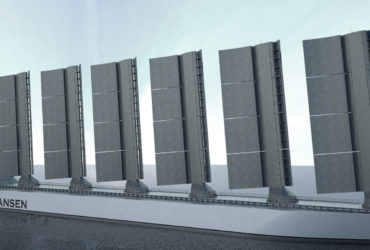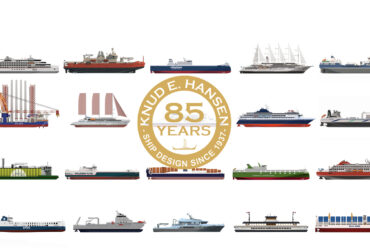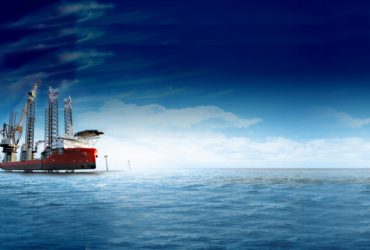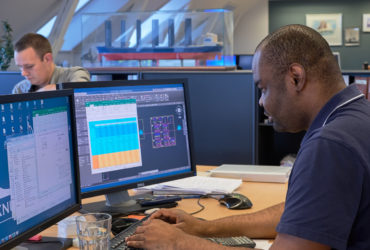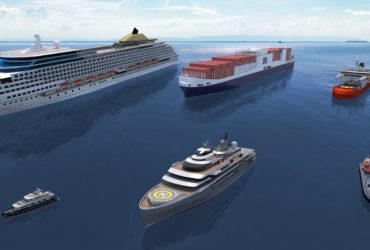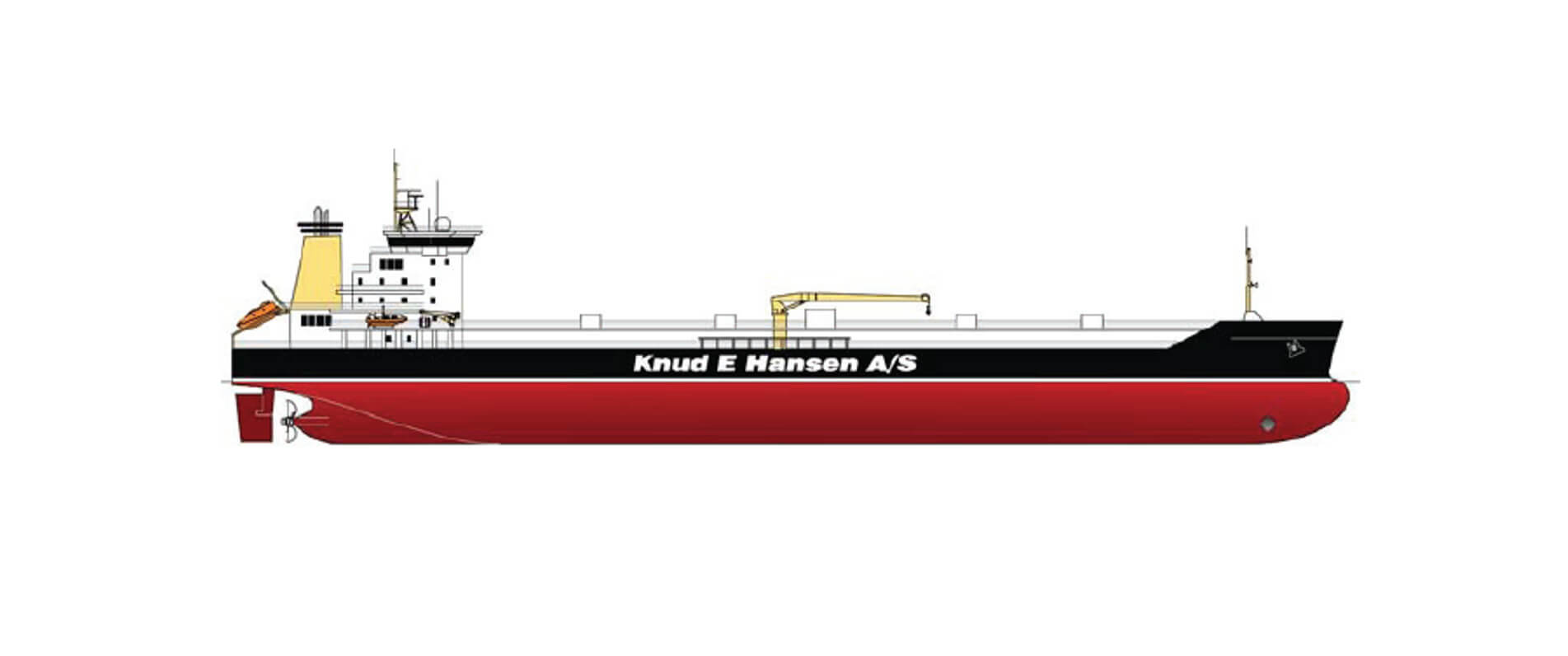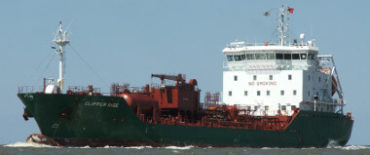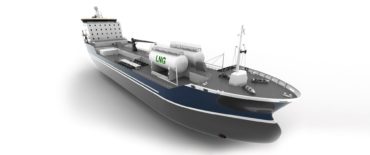05 August 2014
Leading Danish independent naval architects, designers and marine engineers KNUD E. HANSEN (KEH) has down the years put together a portfolio of tanker designs
Article from TANKER Operator June/July 2014
These include 6,300 dwt (internal project) 14,250 dwt, 16.000 dwt (being re-designed and optimised), 19,999 dwt (pending) and 24,000 dwt IMO II types. The company also offers designs for IMO I tankers and product tankers, for example the basic design package for the Stolt-Nielsen parcel tankers now being built at Hudong Zhonghua. In addition, the company can offer tanker designs, either with coated, or stainless steel tanks. The KEH design knowhow is based on many years of experience mixed with very experienced senior engineers, who were heading up the design work for the Stolt-Nielsen tankers. The company’s senior engineers have been managing chemical and product tanker projects through their previous work at Maersk Ship Design, KEH head of machinery and systems Brian Bender Madsen explained.
KEH is also working on the design of a medium size LNG carrier for undisclosed European interests and has also designed a 14,000 dwt asphalt/black oil/IMO II chemical tanker powered by LNG for operations in Canadian waters (St Lawrence River and the Great Lakes).
The Canadian owner and KEH are currently awaiting quotes from various shipyards to build the vessel. This is a continuation of KEH’s strong market position in Canada, as the company has been involved in specialized designs for operating in the St Lawrence and the Great Lakes. For example, in early 1965, Ralph Misener commissioned KEH to design the largest vessel in the fleet and the company’s first self-unloader. At that time, the deck mounted self-unloading system was unique on the Great Lakes, Madsen said. Taking the 24,000 dwt IMO II type design as an example, KEH said that the design method is based on long term experience on ship design and is undertaken in in cooperation with leading tanker operators.
Using advanced software tools for predicting optimum propulsion power, hull lines, stability, energy efficiency, cargo capacity, segregations and hull structural scantlings, KEH claimed to be able to guarantee a low EEDI.
As an example, the new ultra long stroke 2-stroke engines have to some extent changed the way of designing vessels/hulls, as today the aft part of the vessel is more, or less designed around the main engine with the focus on the interaction of propeller geometry to maintain overall propulsion efficiency.
This design is in compliance with IACS Common Structural Rules, IBC code and OCIMF. The vessel is optimised at the lowest energy consumption for a number of different drafts/cargo capacities considering optimal cargo volume, hull structural mass and ballast tank layout.
An example of a KEH designed tanker in service is the 6,300 dwt IMO II type chemical tanker Inge Wonsild, since renamed Nordic Inge, which was completed in 2005.
The vessel was designed by KEH for Wonsild & Søn (now part of Nordic Tankers) as a stainless steel chemical carrier, IMO II and III, and for oil products, capable of trading worldwide.
KEH undertook the conceptual and basic design, including general arrangement, outline and building specifications, lines plan, speed and power prediction and verification, stability, midship section and other structural drawings.
For optimisation projects, Madsen explained at Tanker Operator’s recent Copenhagen conference that for old and bad designs there are many solutions, as there are for larger tankers. But for smaller and newer tankers, there are only a few enhancements that can be undertaken.
He said that the general characteristics of a full-form/high block coefficient vessel such as a tanker are;
- 60-80% of the hull resistance is in the form of viscous resistance.
- 10-20% can be attributed to wave resistance.
- 5-10% to hull roughness.
- Up to 5% to air resistance.
The largest areas for improvement here lie in optimising the hull form (optimising carrying capacity), applying smooth coatings and keeping the hull and propeller clean. For tankers already in operation, hull form optimisation has very limited applicability. However, for newbuildings it has a high value, he added.
Madsen advised owners to quantify the operating costs of a vessel before embarking on an optimisation programme. He listed the operating parameters and approximate costs for a 300,000 dwt VLCC, plus the savings that could be accrued –
- Specific fuel consumption at sea = 175 g/kWh
- Specific fuel consumption in harbour = 200 g/kWh
- Power consumption at sea = 22,050 kW/h
- Power consumption in harbour = 500 kW/h
- Days at sea = 295
- Days in harbour = 70 HFO fuel cost= $650 per tonne
- LSFO cost = $950 per tonne
- Average daily consumption = 92.61 tonnes
- Overall annual cost at sea = $17,757,967
- Overall annual cost in harbour = $159,600
- Total overall annual cost = $17,917,567
- A 2% design optimisation annual saving = $355,159
- A 6% design optimisation annual saving = $1,065,478
- A 10% design optimisation annual saving =$1,775,797
For a 110,000 dwt Aframax, the 2% design optimisation annual saving would amount to $224,693; 6% =$674,078 and at 10%= $1,123,463.
- A 50,000 dwt MR at 2% = $115,970; 6% = $347,911; 10% =$579,852
- A 30,000 dwt Handysize at 2% = $86,978; 6% = $217,445; 10% = $434,889
- A 19,999 dwt Handysize, at 2% = $50,737; 6% = $152,211; 10% = $253,685
- A small 6,500 dwt design at 2% = $36,241; 6% = $108,722; 10% = $181,204
Madsen outlined a case study of retrofitting ducts on six VLCCs. The client needed a simplified approach with a minimum saving of 5% per vessel with a maximum return on investment of 12 months. In addition, the vessels had to remain in service. The quantified savings equal to 5% was calculated at $900,000 per year. Other energy saving devices were considered, but didn’t comply with the ROI request.
Breaking down the costs involved-
- Duct manufacturer’s design fee = $175,000
- Duct’s materials = $500,000 per vessel
- Project handling = $25,000
- Finance costs = $20,000 per vessel
- Total cost per vessel = $555,000
Model test results had shown an annual saving of 6-10%, depending on speed and trim. Fitting a duct on newbuildings would also be applicable, as could a waste heat recovery system with a ROI of 12 months.
Another case study looked at a duct retrofit on a 24,000-30,000 dwt chemical tanker. The client required retrofits on six vessels with a minimum saving of 5% per vessel and an ROI of one year and again, the vessels must remain in operation.
The amount of saving quantified for a 5% saving was around $215,000 per year. The total cost similar to that outlined above would be $242,000 per vessel. The estimated results showed a 3-6% saving, depending on speed and trim and the ROI would fall within the one year time frame.
Answering the question- why should tanker owners involve a design house- Madsen said that KEH’s business model is that it does not believe in standard vessels, as owners demands are different even though they are competing in the same world. Therefore, the company tailors each vessel design to fit each specific owner’s requirements.
Historically (before fuel prices became a game changer), cargo vessels were optimized for quite a high design speed. For example, for tankers it was not unusual that they were optimised for 14 – 16 knots. The selected speed was for some time only based on traditions and ‘nice to have’ .
When KEH starts to tailor a vessel for a specific owner, the company strongly recommends that the owner collects actual operational data. This data is a very important input to find the optimum design speed for a vessel. Experience shows that in many cases, the optimum design speed is much less than the design speed of an owner’s existing vessels, Madsen said.
With the vessel’s operational profile, KEH is able to run its unique iterative design spiral.
The output files define design criteria, such as:
- General arrangement
- Cargo layout
- Cargo tank configuration
- Structural configuration and integrity
- Machinery configuration analysis
- Optimum main dimension analysis
- Initial stability check
- Vessel overall efficiency
- Future legislation
Given the forthcoming SOx and NOx limitations, owners can gain a big advantage by renewing their fleet now, Madsen warned, as many of KEH’s projects show that retrofitting for compliance for future SOx limits is very costly compared to fitting same equipment on a newbuild.


